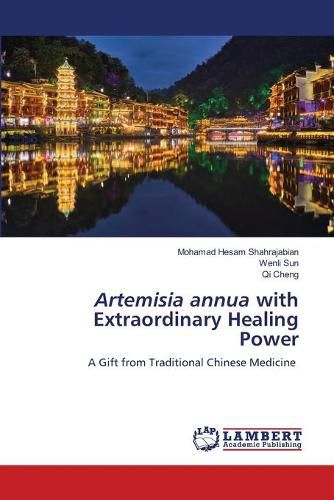Readings Newsletter
Become a Readings Member to make your shopping experience even easier.
Sign in or sign up for free!
You’re not far away from qualifying for FREE standard shipping within Australia
You’ve qualified for FREE standard shipping within Australia
The cart is loading…






This title is printed to order. This book may have been self-published. If so, we cannot guarantee the quality of the content. In the main most books will have gone through the editing process however some may not. We therefore suggest that you be aware of this before ordering this book. If in doubt check either the author or publisher’s details as we are unable to accept any returns unless they are faulty. Please contact us if you have any questions.
Artemisia annua L. (Chinese wormwood herb, Asteraceae) synthesizes artemisinin, which is known as qinghaosu, considers as a unique sesquiterpene endoperoxide lactone. In traditional Chinese medicine, it has been used for the treatment of fevers and haemorrhoides. More researches on Artemisia annua L. and its derivatives, especially artemisinin and other metabolites will help to increase the knowledge and value of A. annua and its constituents. Phenolics from Artemisia annua consists of coumarins, flavones, flavonols, phenolic acids, and miscellaneous. Artemisinin has attracted much attention from scientists due to its potent antimalarial properties as secondary metabolites. Moreover, more attentions are focusing on the roles of artemisinin and its derivatives in treating obesity and metabolic diseases. They also have anti-bacterial, anti-inflammatory, anti-tumor, anti-protozoa, anti-helminthic, anti-fungal, anti-angiogenic and antiproliferation properties.
$9.00 standard shipping within Australia
FREE standard shipping within Australia for orders over $100.00
Express & International shipping calculated at checkout
Stock availability can be subject to change without notice. We recommend calling the shop or contacting our online team to check availability of low stock items. Please see our Shopping Online page for more details.
This title is printed to order. This book may have been self-published. If so, we cannot guarantee the quality of the content. In the main most books will have gone through the editing process however some may not. We therefore suggest that you be aware of this before ordering this book. If in doubt check either the author or publisher’s details as we are unable to accept any returns unless they are faulty. Please contact us if you have any questions.
Artemisia annua L. (Chinese wormwood herb, Asteraceae) synthesizes artemisinin, which is known as qinghaosu, considers as a unique sesquiterpene endoperoxide lactone. In traditional Chinese medicine, it has been used for the treatment of fevers and haemorrhoides. More researches on Artemisia annua L. and its derivatives, especially artemisinin and other metabolites will help to increase the knowledge and value of A. annua and its constituents. Phenolics from Artemisia annua consists of coumarins, flavones, flavonols, phenolic acids, and miscellaneous. Artemisinin has attracted much attention from scientists due to its potent antimalarial properties as secondary metabolites. Moreover, more attentions are focusing on the roles of artemisinin and its derivatives in treating obesity and metabolic diseases. They also have anti-bacterial, anti-inflammatory, anti-tumor, anti-protozoa, anti-helminthic, anti-fungal, anti-angiogenic and antiproliferation properties.